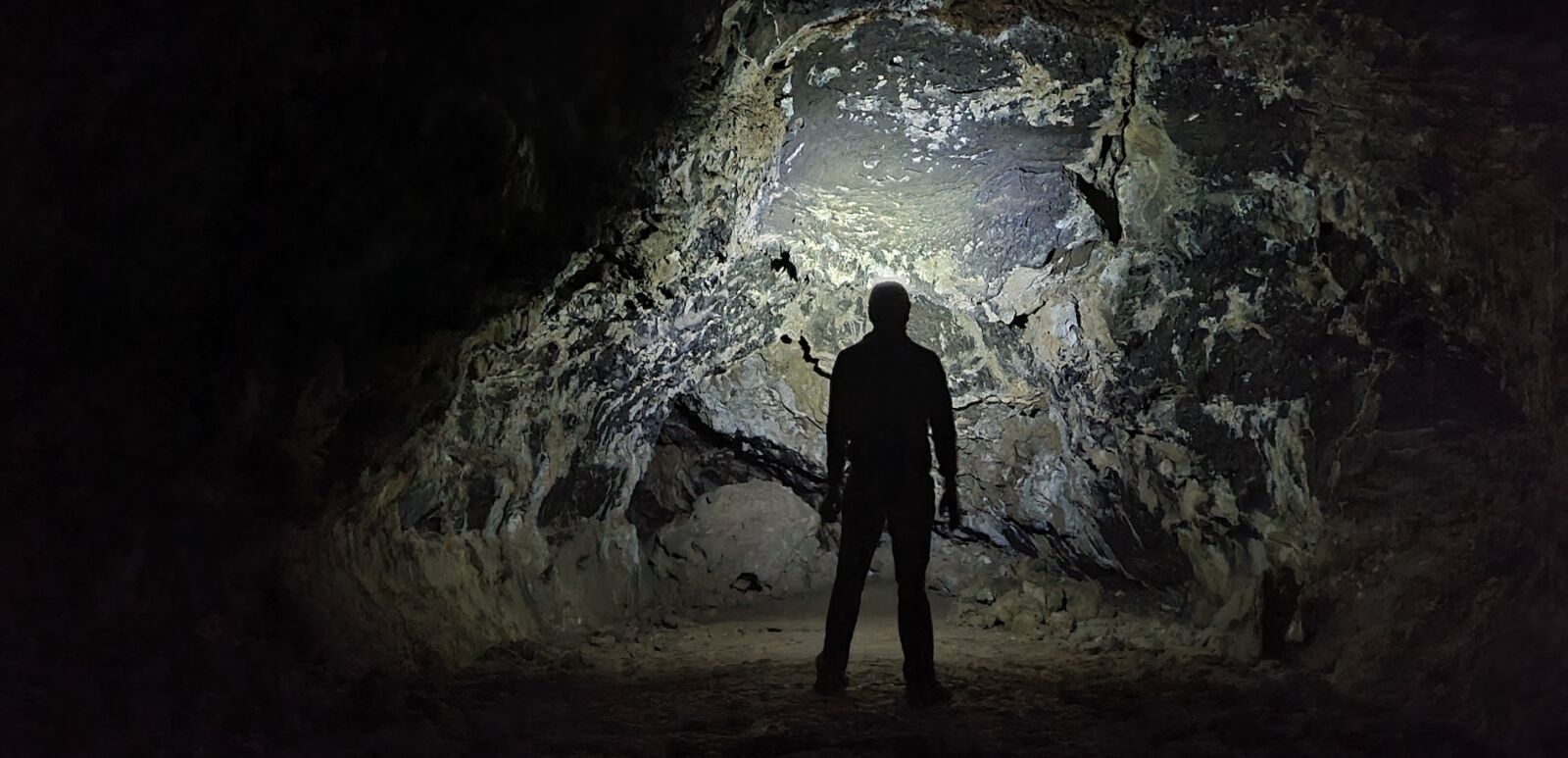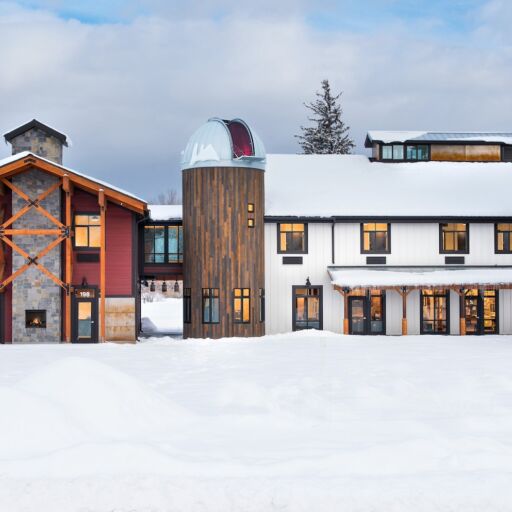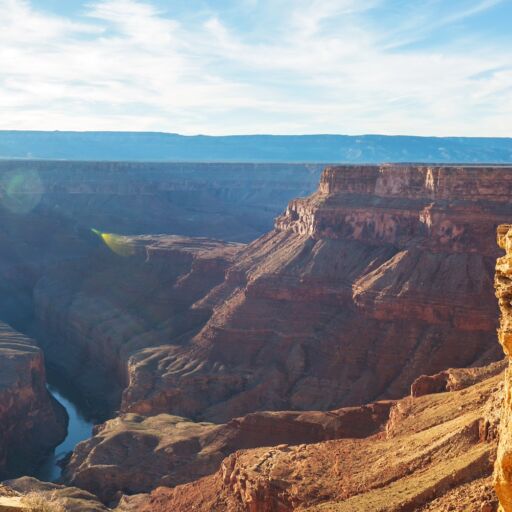An underground world a half-million years in the making awaits at Lava Beds National Monument in Northern California. Formed by surging lava rivers over basalt bedrock, the park’s 20-plus underground lava tubes are now there for self-guided exploration. These temperature-controlled tubes range in difficulty and length, but all share a darkened world. If you chance a moment in the pitch black — in a darkness otherwise only found in the deep ocean — your breathing slows and, at least for me, everything seems to click into place.
Not all the caves at Lava Beds descend into absolute darkness, though, and the monument has plenty to do aboveground as well, with hiking trails and that beautiful landscape to take in. I personally recommend spending the night at the monument’s campground to discover a different kind of darkened atmosphere, one where the cosmos sprawl across an unfiltered night sky.
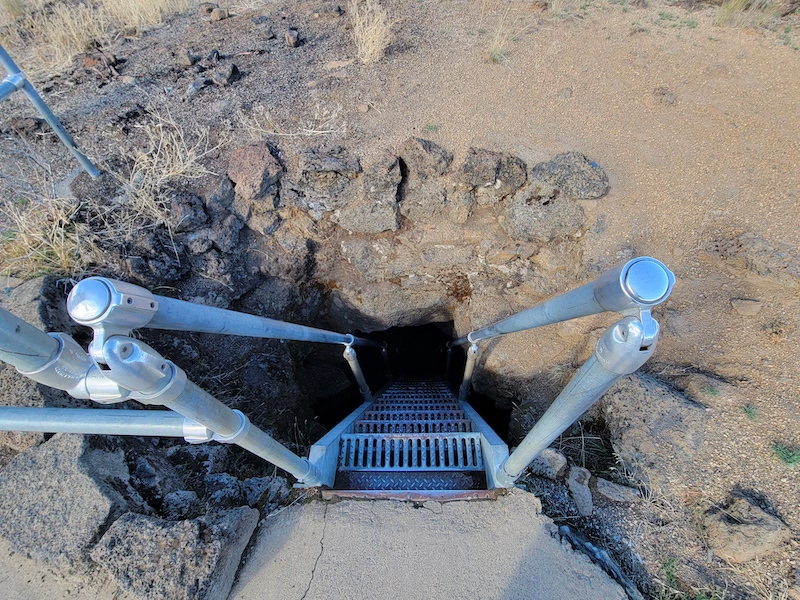
Take note: When you visit, you’ll need a caving permit, which is free, though there is an entrance charge to the park of $25 per vehicle. The permits are available near the entrance of Cave Loop Road at the monument’s visitor center. You’ll also need the proper equipment and knowledge to cave safely and softly. (We can’t stress the safety and softly part enough. More on that below.) Here’s your need-to-know info before you go.
Where and what is Lava Beds National Monument?
Lava Beds National Monument sits atop the massive Medicine Lake Volcano, less than 15 miles south of the Oregon border in northeast California. Medicine Lake is still an active volcano, though the most recent eruption, the Callahan Flow, occurred approximately 1,200 years ago — still a new release on a geologic timespan.
In total, the volcano’s eruption events span the last half-million years, and all that explosive activity has left the modern-day Lava Beds National Monument with a stark yet inviting landscape. Hardened lava flows, left-behind craters and other scars of its molten history fill the volcano’s gently sloping flanks and host bouquets of wildflowers throughout the warmer months.
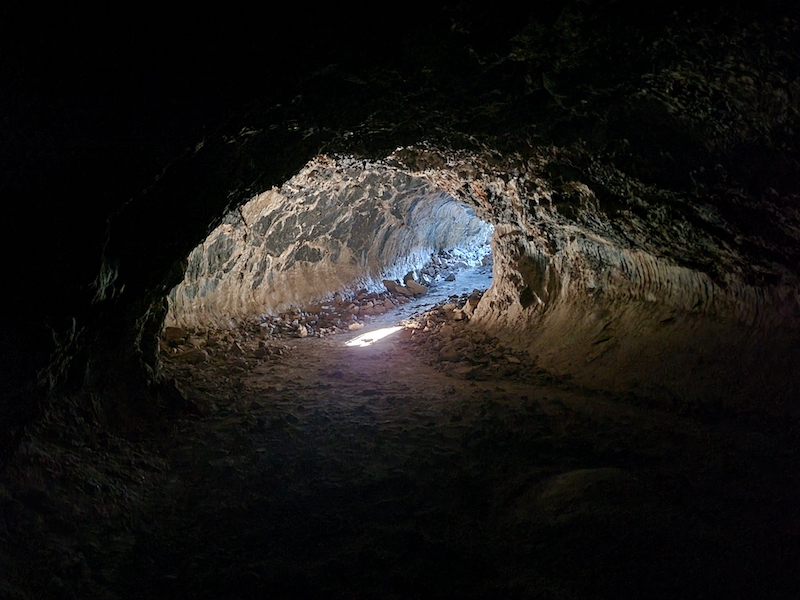
A vast network of more than 800 of these lava tubes, also known as lava caves, exist throughout the park. With marked entrances, 24 of these tubes are open to the public for self-guided exploration. Though advanced research helps, rangers at the visitor center can answer questions and highlight some of the best-suited caves to explore. Those looking for moderately challenging caves can grab a “Lava Beds Caves” guidebook at the visitor center for maps and details about the cave passageways.
The visitor center also has helmets and flashlights for sale, though visitors are encouraged to bring their own. And you can also browse the visitor center exhibits, which share the monument’s geological and cultural history. Among the displays are ones dedicated to the legacy of the Modoc people, the region’s original inhabitants. A few exhibits detail the Modoc War, which began in 1872.
Heads up: Visitors are also screened for white-nose syndrome at the visitor center. What’s that? It’s a deadly disease to bats, and it transports on clothing and boots. Avoid wearing clothing or shoes that have recently been in other bat habitats.
Caving safely and softly
Very few commercial caves offer the same self-guided opportunities as the ones at the monument. With that comes a heightened need for guests to be vigilant about their own safety and commit to the well-being of the underground environment. Here’s what that means in practical terms to visitors.
Cave safely
At a minimum, bring two trusted light sources per person. (Cell phone flashlights don’t count as trusted.) To that point, there should always be multiple people in a cave descent: Don’t cave alone if you can avoid it, and choose a cave of the appropriate level for everyone in the group. Don’t let children out of eyesight. Again, don’t let children out of eyesight.
Always wear a helmet, and tractioned footwear helps navigate potentially muddy conditions. Caves at Lava Beds remain a comfortable 55 degrees Fahrenheit year-round, so come with long sleeves and pants even if it’s hot aboveground. Gloves are also recommended for better grip and to keep oily fingerprints off the walls.
Lastly, let someone on the surface know your plans, including when you plan to return to cell service. Making phone calls or accessing the internet is impossible in the caves.
Cave softly
A great rule of thumb is don’t leave the caves and tubes in worse shape than you found them. What’s that mean, exactly? To protect access to the caves, do not bring pets, food or alcohol into them. Also, no smoking, vaping or open flames. We shouldn’t have to say this, BUT, never break rock formations or deface the caves by etching, tagging or marking the walls. NEVER. Anything that comes into the cave with you needs to come back out, and please, take care of your business before you descend. (The caves are not a restroom, people!)
It’s not common to run into wildlife in the caves, but if you discover any roosting bats, quickly and quietly leave the area and avoid excessive light shining. More information here.
Levels of caves
Three difficulty levels categorize the 24 caves open to the public at Lava Beds. “Least Challenging” caves are the most family-friendly. This cave category has high ceilings, smooth walkways and occasional sun exposure. These caves are the ones you want for family trips and are a gentle introduction to underground exploring.
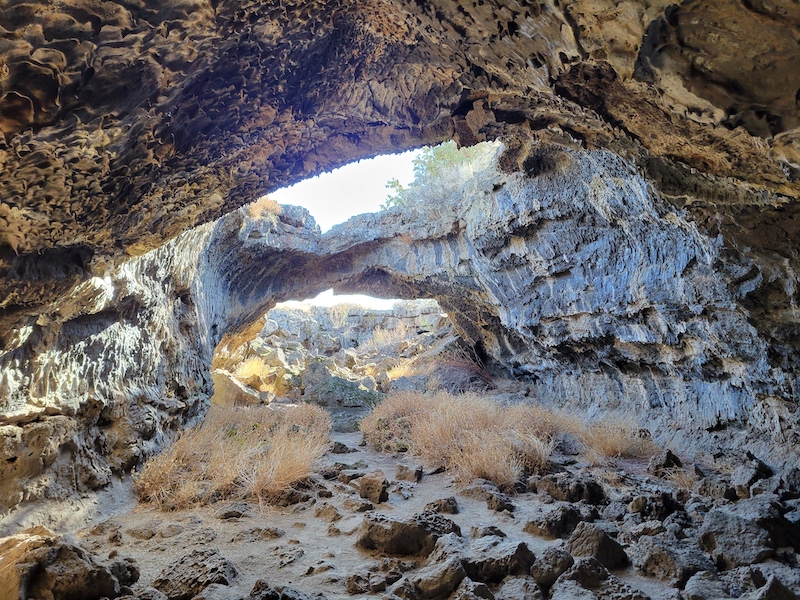
“Moderately Challenging” caves at the park take the experience further with absolute darkness, a bit more route finding and the need for additional gear like a guidebook and kneepads. These caves are narrower and rockier and have some crawling and scrambling involved. As someone with moderate hiking and limited caving experience, I spent the most time in these caves during my visit.
“Most Challenging” caves, with names like Labyrinth and Catacombs, are for experienced and outfitted teams. These caves offer some of the most unspoiled underground adventures in the nation.
Aboveground things to do
The monument maintains 13 hiking trails. These generally short hiking trails lead to photogenic spots like Schonchin Butte, home to a functioning fire lookout and one the best panoramic views in the park. Historical markers also designate battlefield locations of the Modoc War.
The Monument also maintains the first-come, first-serve Indian Well Campground. It has 43 sites catering to tent camping, van camping and small trailers, or if you’re like me, a Subaru with a bed built into the back. The campground offers a solid overnight option for traveling to the somewhat-remote location of the monument.
And when you go, remember — cave safely and softly.


